Back to school: We visit Zaha Hadid’s new Middle East Centre at Oxford University
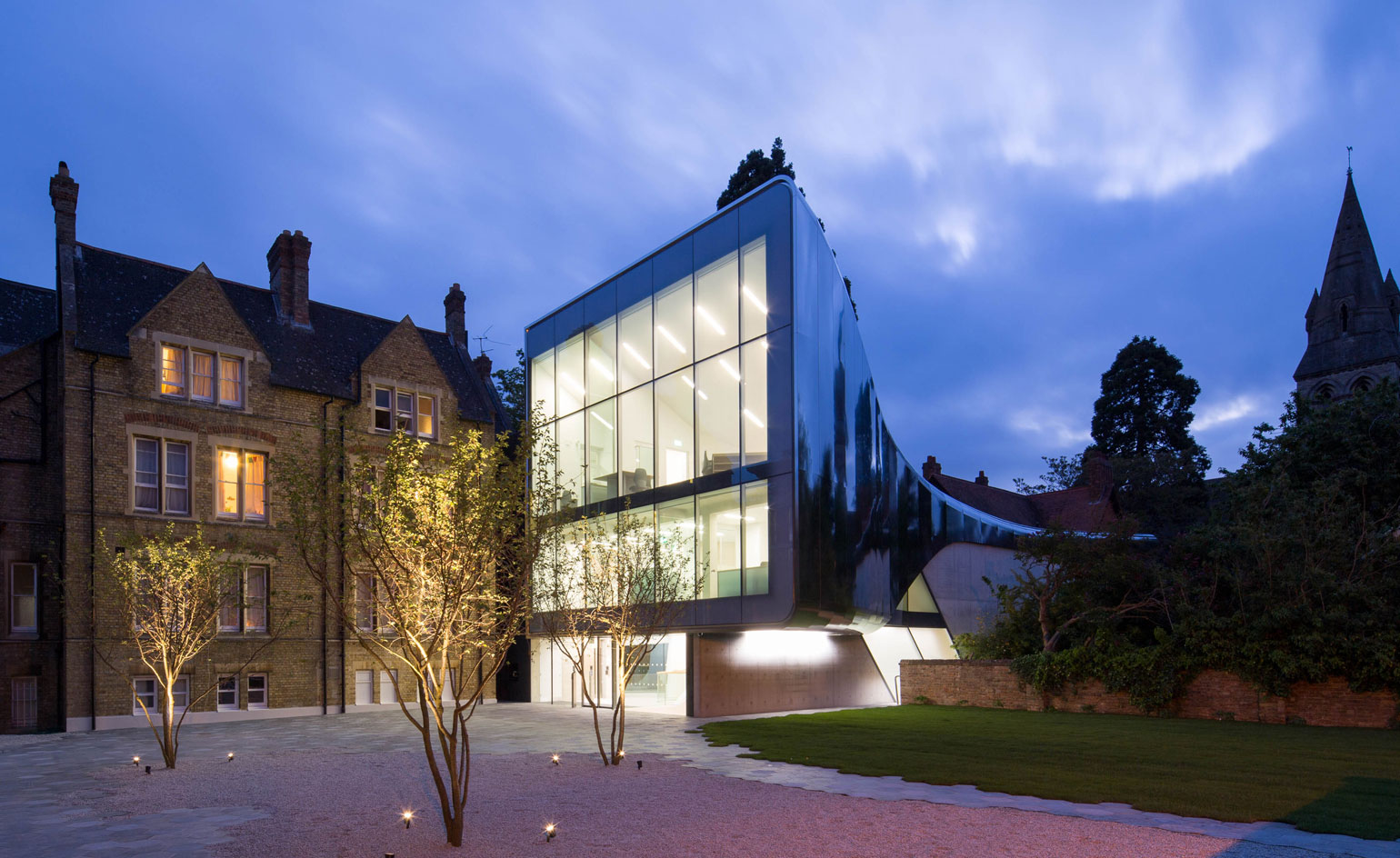
Oxford University has a tradition of commissioning exceptional modern architecture, from Niall McLaughlin's award winning 2011 Somerville College student accommodation, to design classics like Arne Jacobsen's St Catherine's College. The new Investcorp Building for the school's Middle East Centre at St Antony's College is the campus' latest addition. The stainless steel-clad, shiny, flowing piece is a confident departure from traditional Oxford's material palette of brick and stone - but one would expect nothing less from its acclaimed architect, Zaha Hadid.
Opened in 1957, the centre announced plans for a new building on its 50th anniversary, responding to a growing need for space. This addition represents a contemporary vision of what an Oxford building could look like, says the Centre's Director Eugene Rogan. 'Does it reflect the Middle East?' he asks. 'It is all about the 21st century.' While being a break from traditional forms of Middle Eastern architecture, the building's contemporary nature represents the present and future of the region, hinting to the area's current growth and ongoing change. And it feels at home in Oxford, continues Rogan, where modern architecture sits side by side with historical work.
The twisting form is compact, yet clever arrangement and an immaculately detailed interior makes it feel sharp, bright and generous. It touches its two Victorian neighbours - also part of the Centre's complex - but features its own independent entrance off the street, through a courtyard, past the 2013 Bennetts-designed Gateway Buildings and the Grade II Listed Hilda Besse Building by Howell, Killick, Partridge and Amis (1970-71). Surroundings were key, explains Project Director at Zaha Hadid Architects Jim Heverin: 'The university was keen that the building is both subservient and clearly contemporary.' It was, for example, designed around a preserved, mature tree sitting in the street-facing garden.
And this is not a building just for Oxford's community of scholars. 'It has been created to be open to the public,' says Rogan. 'It has all our public programs: archives, library, lecture theatre.' The ground floor features a café and concealed kitchen (this is also the space that is the most open towards the street, its front clad in glass), as well as the lobby to the building's dramatic undulating central staircase.
This leads a floor down, to a minimal, oak-clad auditorium with some 120 felt-covered seats, and a set of state-of-the-art archive rooms; and up, to two upper floors of library space, brightly lit through the entrance side's glass elevation (treated so as to control heat and light and protect the precious books and manuscripts handled inside). A series of punctures on the brilliant white ceiling create a composition of skylights, which flood the interior with natural light as well as hint at their architect's trademark architectural curves.
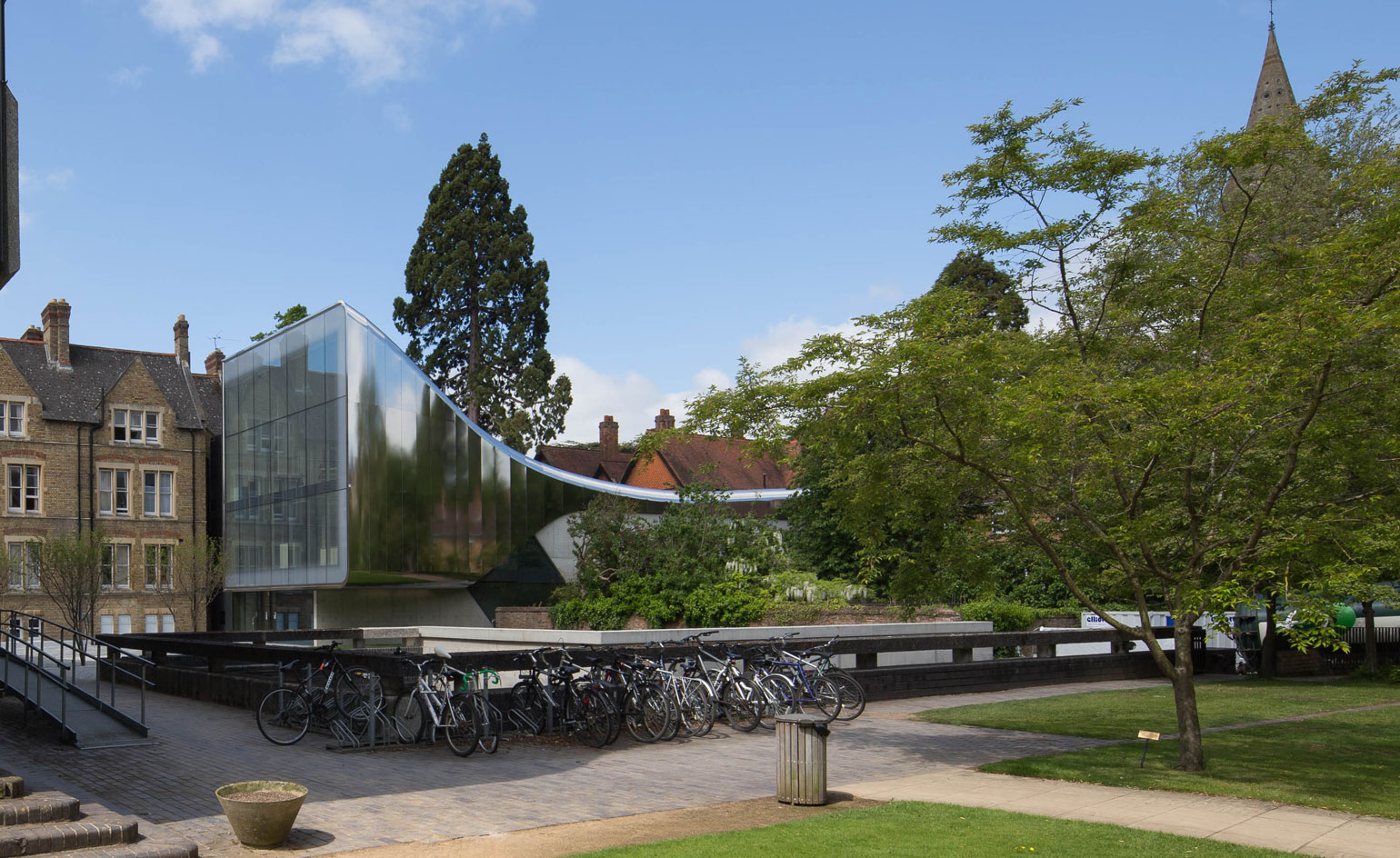
The building's long, shiny and curvaceous form was designed to respect its environment, but at the same time be distinctly contemporary
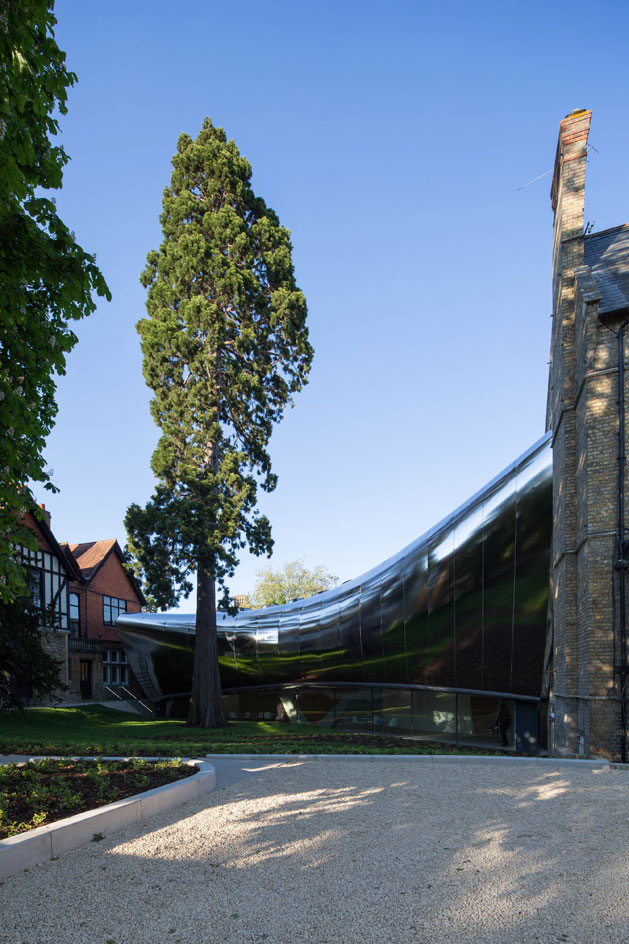
The Zaha Hadid-designed addition touches its two Victorian neighbors, but has its own separate entrance
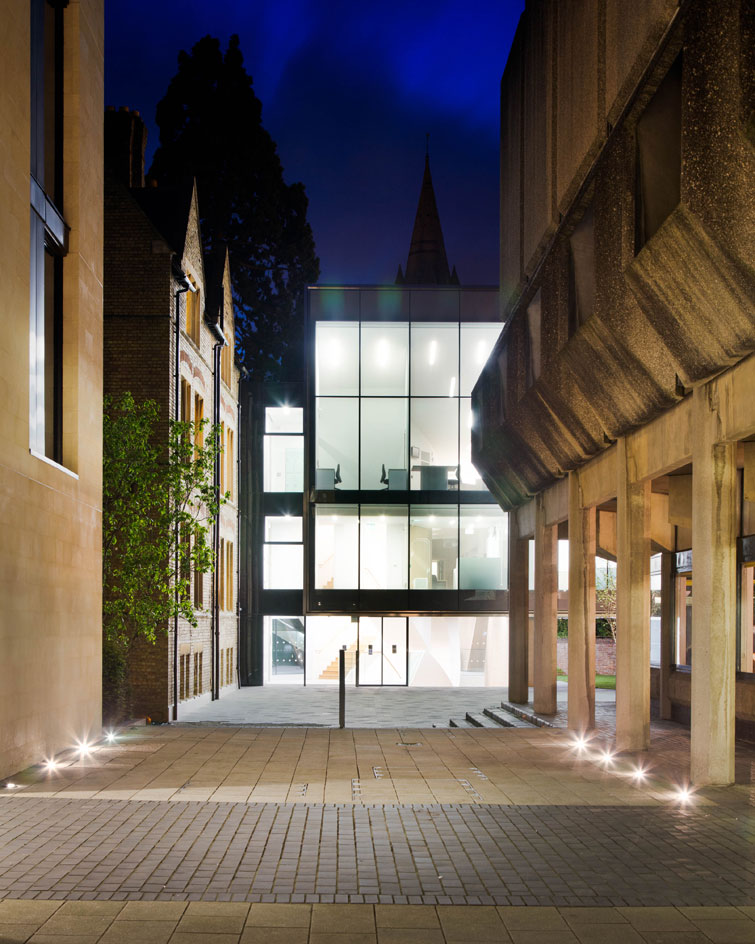
The main entrance is tucked away at the back of the complex, off the main street
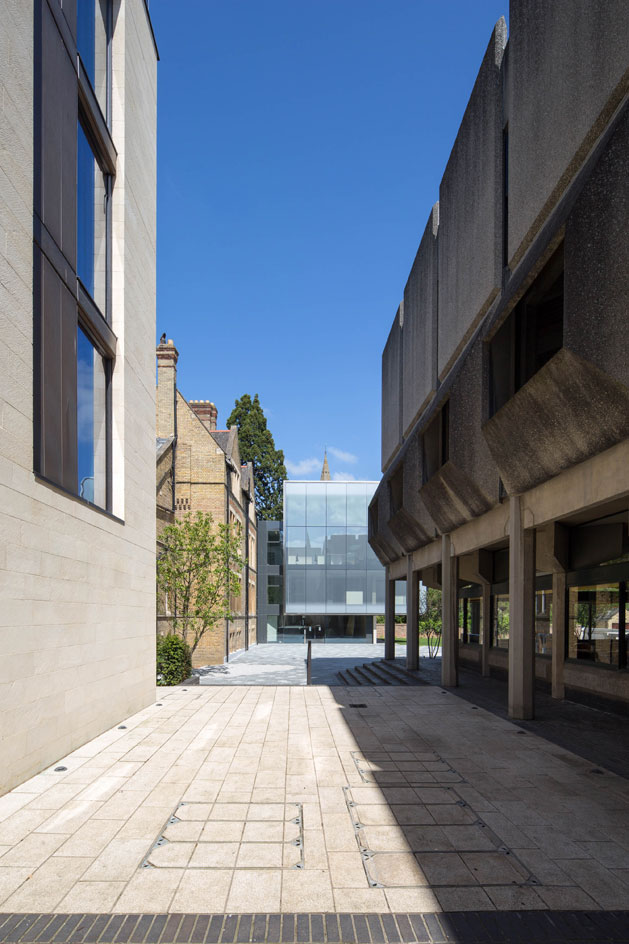
To reach it, visitors go through a courtyard and between existing buildings, such as the Gateway Buildings by Bennetts and the Hilda Besse Building by Howell, Killick, Partridge and Amis
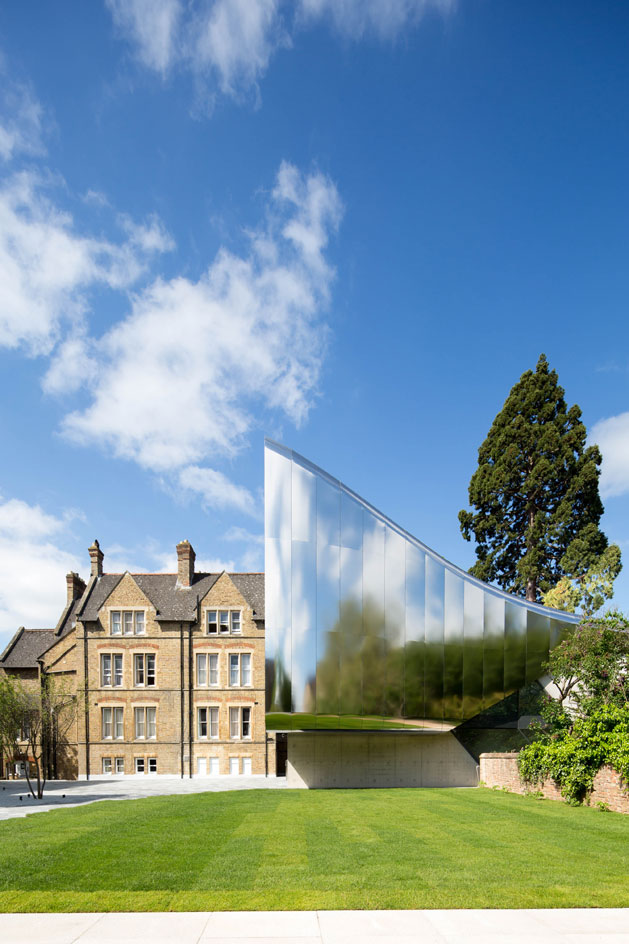
In contrast to its Victorian neighbours, the new structure is clad in glass and stainless steel
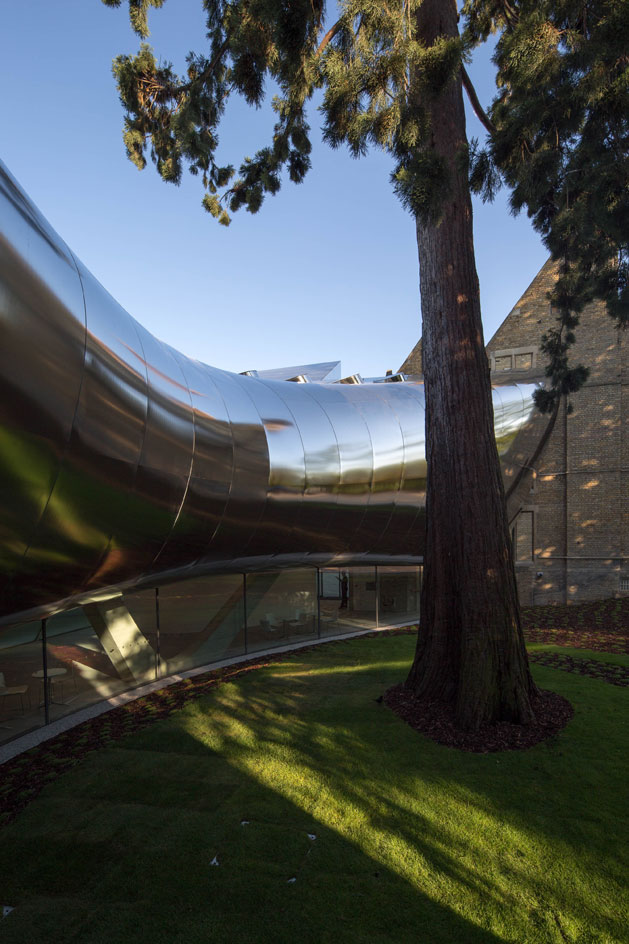
A mature tree at the site's street-facing garden was protected, so the building was designed to curve around it

The open, garden-facing ground floor space houses a cafe, complete with a cleverly concealed kitchen area

A main, elaborate, twisting staircase connects all the building's floors
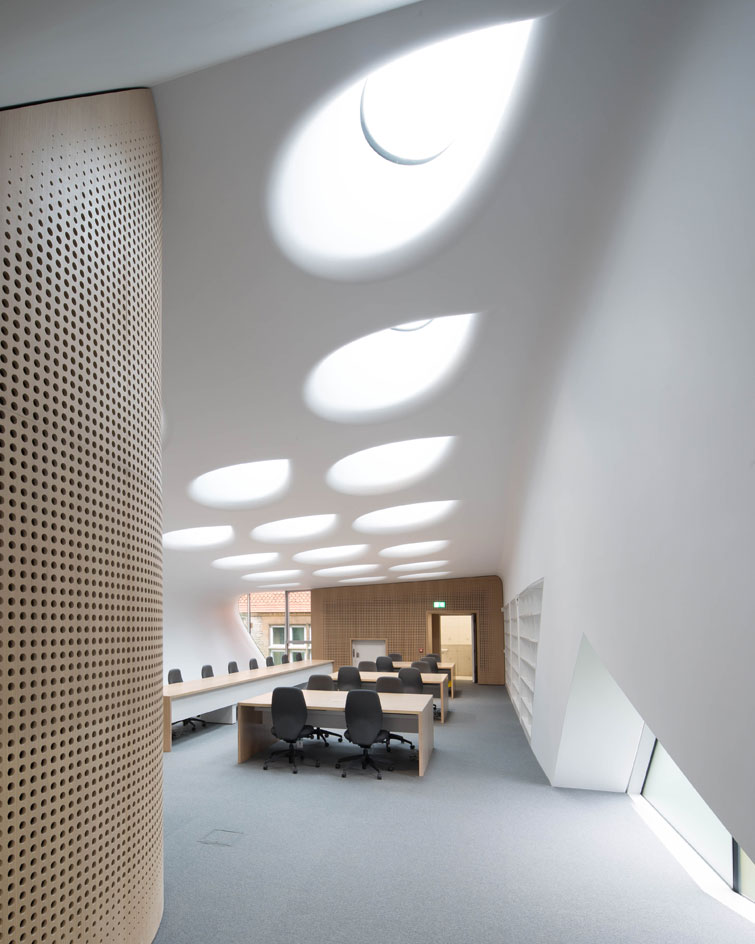
The first floor provides space for the Centre's library and reading rooms...
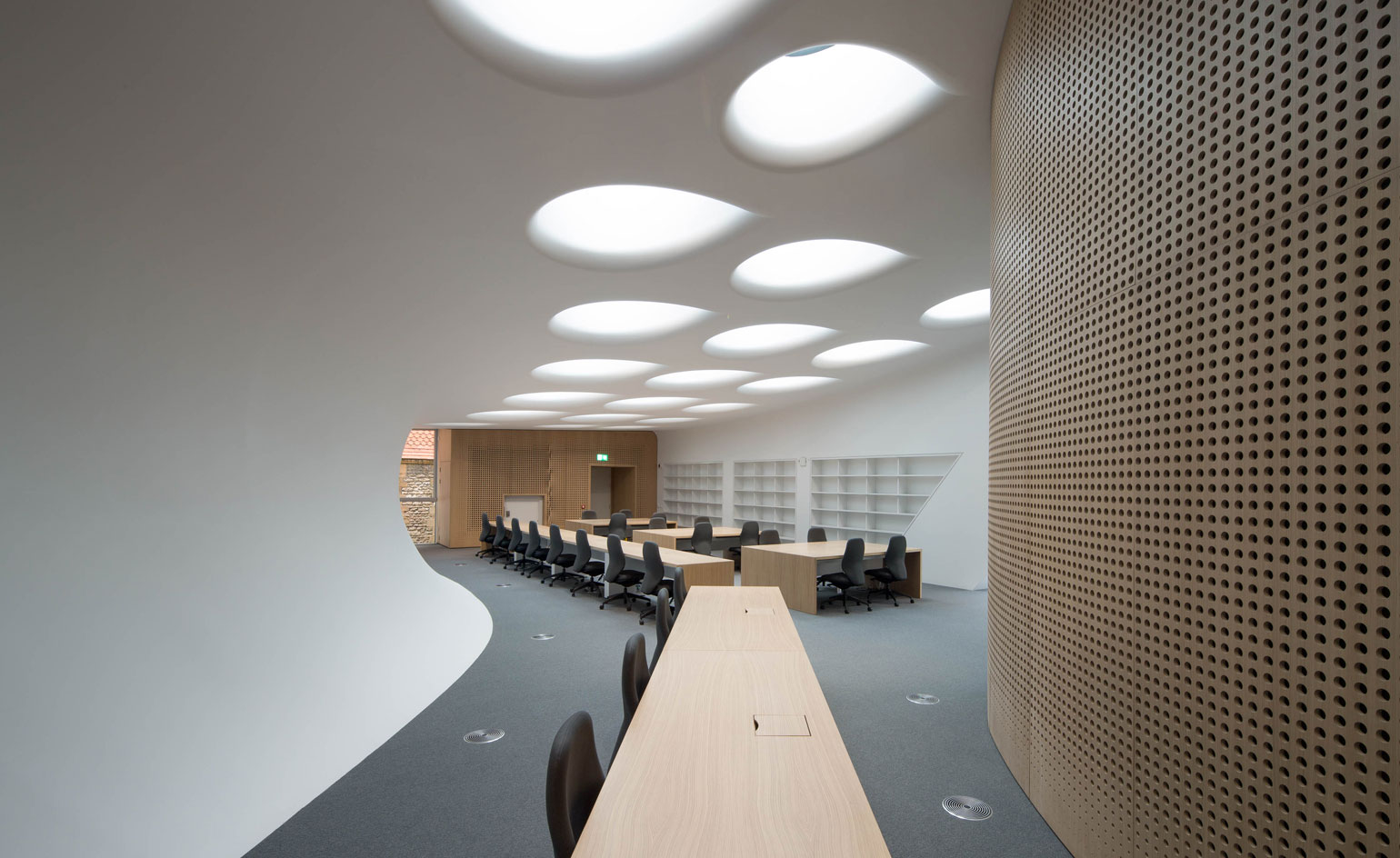
...beautifully lit by a series of smooth, curvy punctures on the ceiling
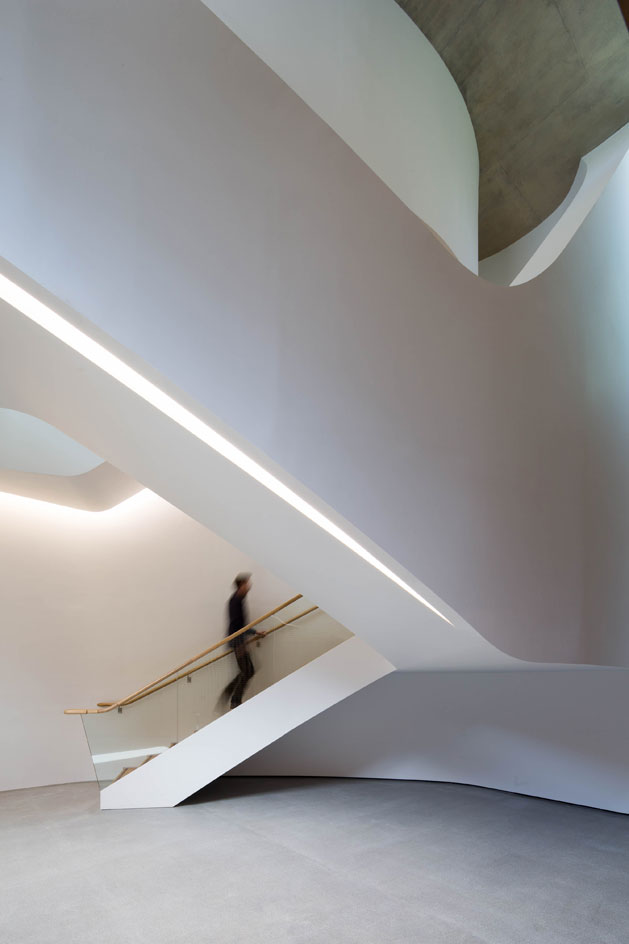
The same staircase leads down to the lower ground level, which contains the centre's archive rooms...
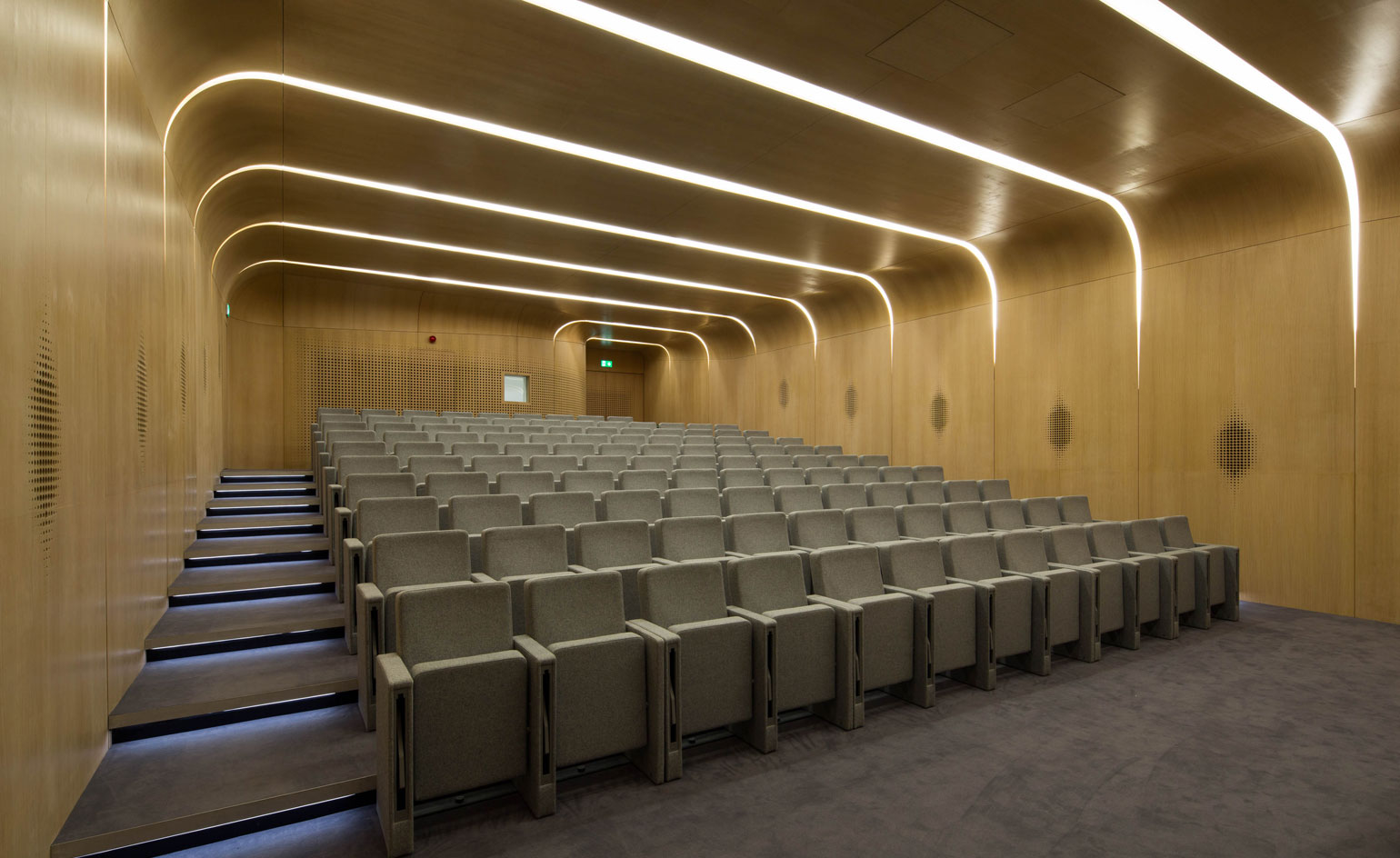
..as well as a state of the art auditorium for lectures and events
Wallpaper* Newsletter
Receive our daily digest of inspiration, escapism and design stories from around the world direct to your inbox.
Ellie Stathaki is the Architecture & Environment Director at Wallpaper*. She trained as an architect at the Aristotle University of Thessaloniki in Greece and studied architectural history at the Bartlett in London. Now an established journalist, she has been a member of the Wallpaper* team since 2006, visiting buildings across the globe and interviewing leading architects such as Tadao Ando and Rem Koolhaas. Ellie has also taken part in judging panels, moderated events, curated shows and contributed in books, such as The Contemporary House (Thames & Hudson, 2018), Glenn Sestig Architecture Diary (2020) and House London (2022).
-
 Put these emerging artists on your radar
Put these emerging artists on your radarThis crop of six new talents is poised to shake up the art world. Get to know them now
By Tianna Williams
-
 Dining at Pyrá feels like a Mediterranean kiss on both cheeks
Dining at Pyrá feels like a Mediterranean kiss on both cheeksDesigned by House of Dré, this Lonsdale Road addition dishes up an enticing fusion of Greek and Spanish cooking
By Sofia de la Cruz
-
 Creased, crumpled: S/S 2025 menswear is about clothes that have ‘lived a life’
Creased, crumpled: S/S 2025 menswear is about clothes that have ‘lived a life’The S/S 2025 menswear collections see designers embrace the creased and the crumpled, conjuring a mood of laidback languor that ran through the season – captured here by photographer Steve Harnacke and stylist Nicola Neri for Wallpaper*
By Jack Moss
-
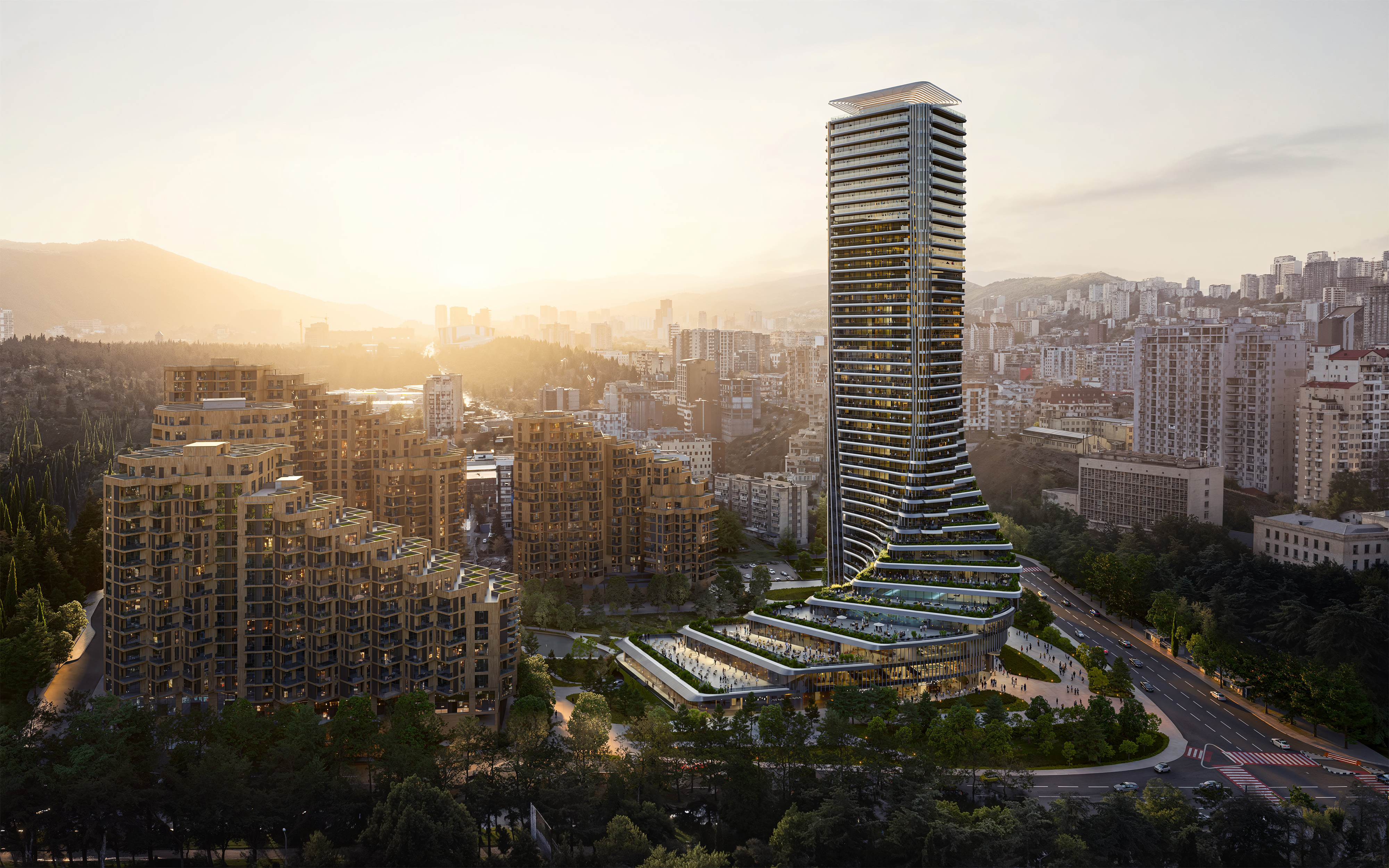 The upcoming Zaha Hadid Architects projects set to transform the horizon
The upcoming Zaha Hadid Architects projects set to transform the horizonA peek at Zaha Hadid Architects’ future projects, which will comprise some of the most innovative and intriguing structures in the world
By Anna Solomon
-
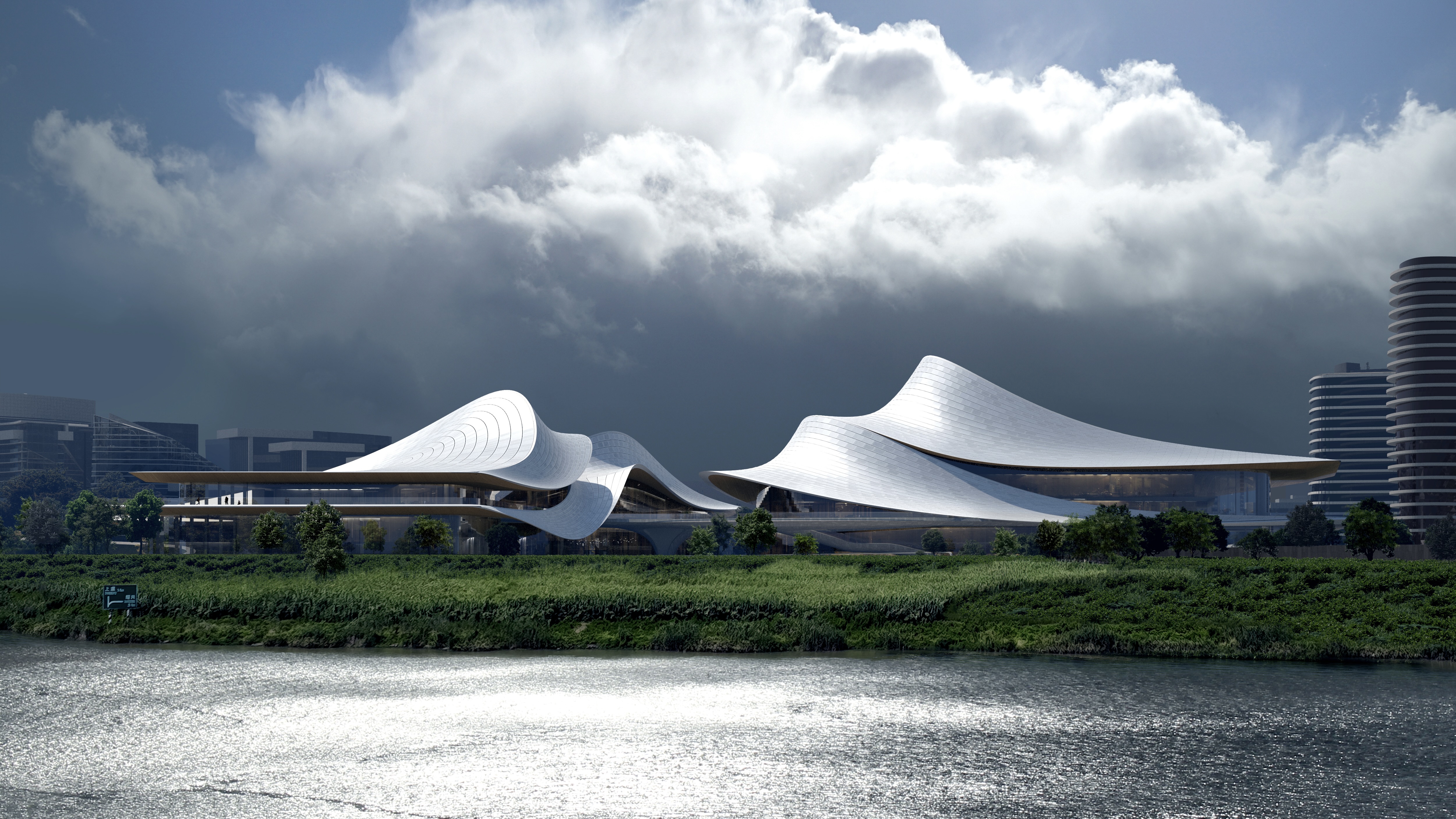 Zaha Hadid Architects reveals plans for a futuristic project in Shaoxing, China
Zaha Hadid Architects reveals plans for a futuristic project in Shaoxing, ChinaThe cultural and arts centre looks breathtakingly modern, but takes cues from the ancient history of Shaoxing
By Anna Solomon
-
 Zaha Hadid Architects’ new project will be Miami’s priciest condo
Zaha Hadid Architects’ new project will be Miami’s priciest condoConstruction has commenced at The Delmore, an oceanfront condominium from the firm founded by the late Zaha Hadid, ZHA
By Anna Solomon
-
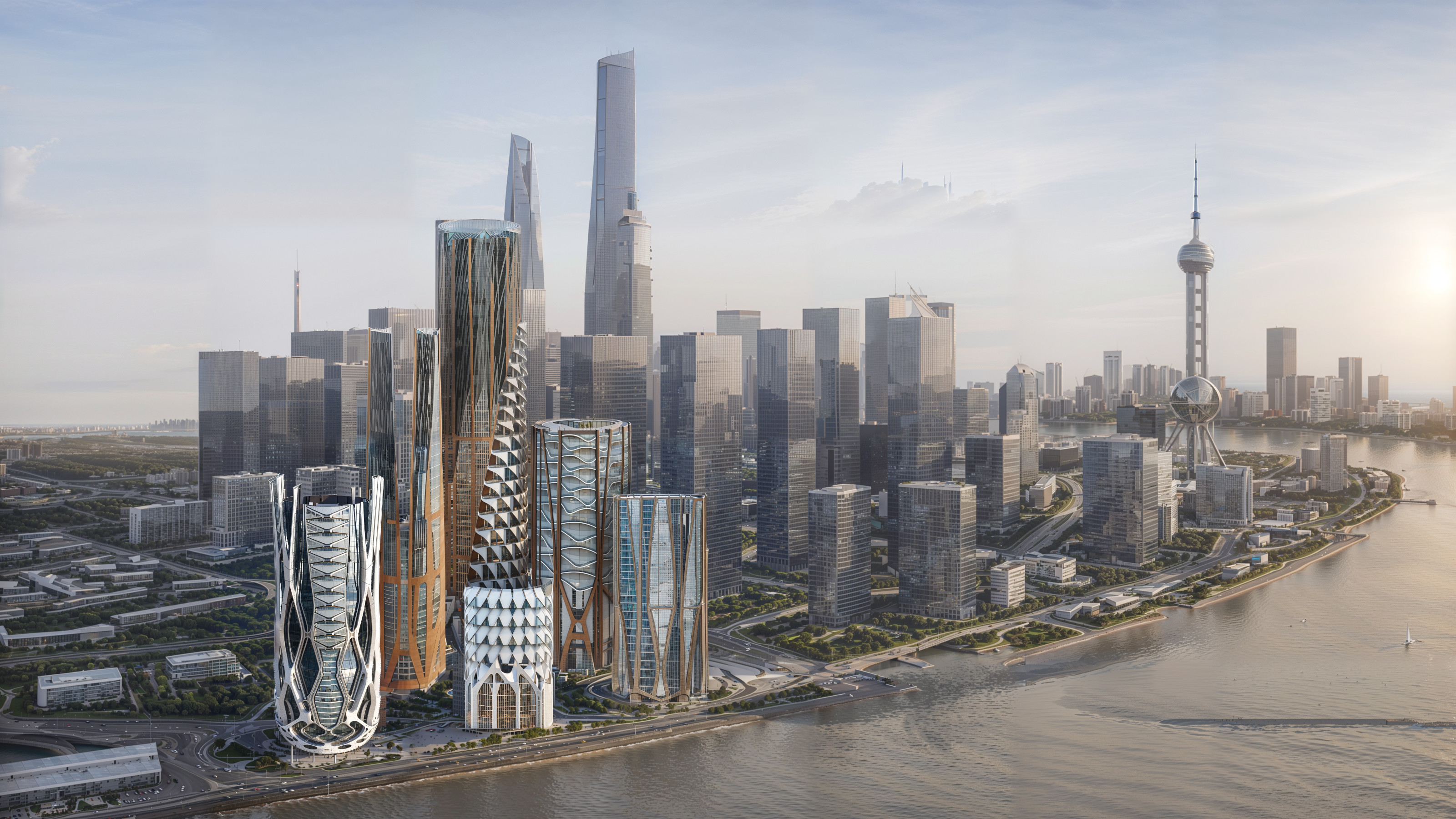 AI in architecture: Zaha Hadid Architects on its pioneering use and collaborating with NVIDIA
AI in architecture: Zaha Hadid Architects on its pioneering use and collaborating with NVIDIAWe talk to ZHA about AI in architecture, its computational design advances, and its collaboration with NVIDIA on design, data and the future of AI and creativity
By Jonathan Bell
-
 Omniyat launches The Alba, new Zaha Hadid Architects-designed residences in Dubai
Omniyat launches The Alba, new Zaha Hadid Architects-designed residences in DubaiDeveloper Omniyat announces The Alba, ultra-luxury residences managed by Dorchester Collection and designed by Zaha Hadid Architects to blend ‘nature and cutting-edge design’
By Simon Mills
-
 Load into this reimagined Fortnite cityscape, courtesy of Zaha Hadid Architects
Load into this reimagined Fortnite cityscape, courtesy of Zaha Hadid ArchitectsA collaboration between Epic Games and ZHA, Re:Imagine London brings the architects’ modular forms into one of the world’s most popular multiplayer games
By Jonathan Bell
-
 The Henderson by ZHA in Hong Kong makes everyone sit up and pay attention
The Henderson by ZHA in Hong Kong makes everyone sit up and pay attentionThe Henderson, ZHA's new high-rise in Hong Kong, stands out in its coveted address through its unusual, fluted façade of glass columns
By Daven Wu
-
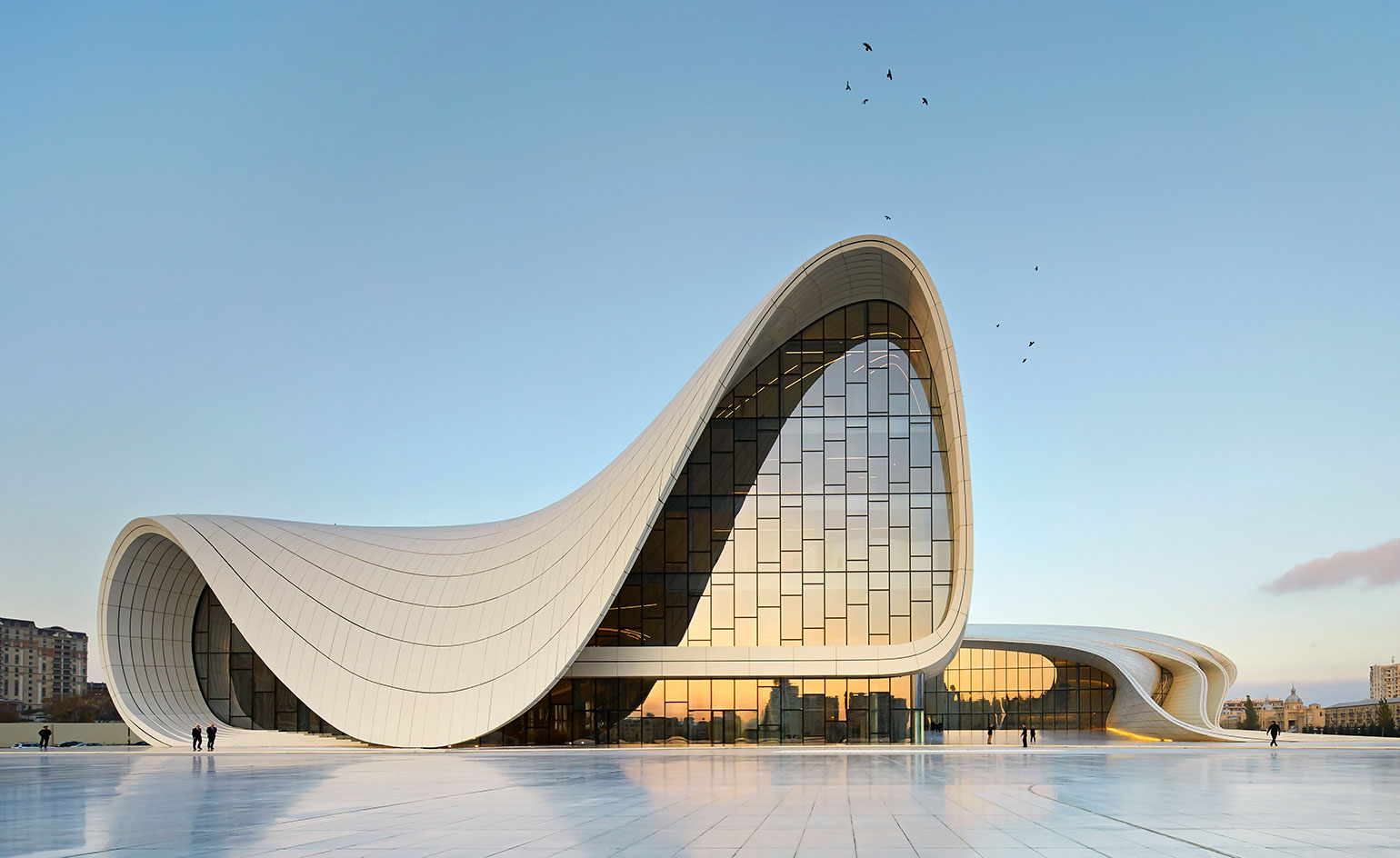 A guide to Zaha Hadid: from architecture to making 'a big hole' in Wallpaper*
A guide to Zaha Hadid: from architecture to making 'a big hole' in Wallpaper*Dame Zaha Hadid was a global, Pritzker Prize-winning architect and a force of nature; in this ultimate guide to her work, we celebrate her life, career and legacy
By Ellie Stathaki